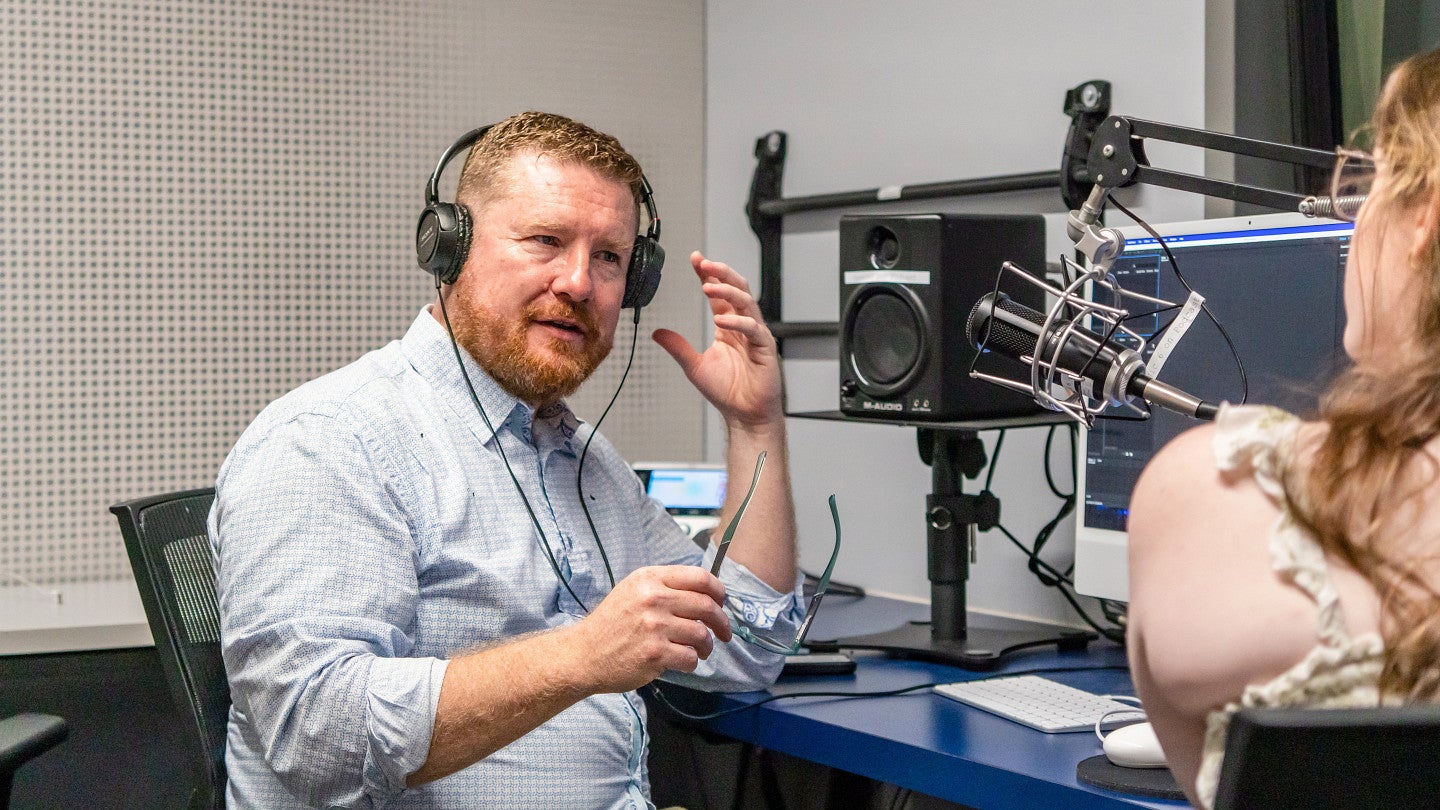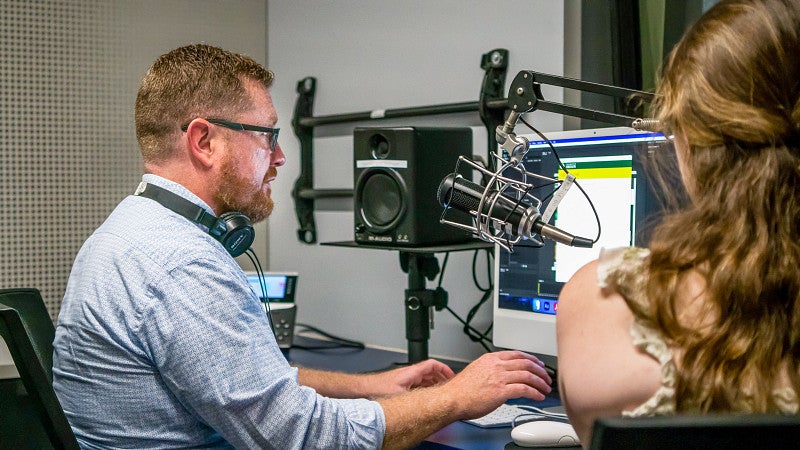
The first time Journalism Instructor Charlie Deitz heard NPR’s “This American Life,” his life changed.
He had never heard this style of immersive audio storytelling before, and the award-winning show, narrated by Ira Glass, drew him in, teaching him new information while keeping him entertained during a long road trip. He discovered what keeps so many listeners enthralled by podcasts today: Hearing a story told in the voice of an experienced storyteller can engage in ways that are different from words typed on a page.
Deitz, who already held a bachelor’s degree in political science from Montclair State University, enrolled in Mt. Hood Community College’s audio broadcast program with hopes of becoming Oregon’s next Ira Glass.
After graduation and honing his skills working in broadcast radio and as an NPR affiliate reporter for three years, Deitz came back to Oregon to enroll in a graduate program at the UO School of Journalism and Communication (SOJC). The program helped him realize how much he loved teaching and mentoring the next generation of storytellers.
Now an instructor for the SOJC, Deitz fosters creativity, innovation and passion in his students as they create their audio stories. He sat down with me to share a few tips and tricks he’s learned to make the most of the medium.
1. A rich background will help draw listeners in and ground your audio story.
When creating an audio story, keep your mic on! The sounds you pick up throughout your interview and day are crucial to building an interesting story. Having rich background sounds consistently playing underneath your narration, drifting in and out, will work like a song. “The music is constantly changing, but it’s dynamic enough that it doesn’t feel chaotic,” Deitz said.
2. There should be an audio element on every second of your track.
When listening to student work, Charlie says the difference he can hear in a work’s professional edge is that “even if there’s nothing, there’s something.” That means that if you’re sitting in a seemingly silent room, you should still be recording! There will always be little background noises even if you don’t realize it — sounds such as the electricity humming, birds chirping outside or cars driving by. Record it all to help take your audio story from amateur to professional.

3. Knowing where to use silence is critical.
When your piece is filled with rich background noise and a deliberate room tone always playing beneath narration and interview, silence can work as the ultimate punctuation. Use silence to your advantage and use it deliberately. Your viewers will immediately snap to attention because, after constant sound, a deliberate silence can be deafening.
4. When your subject says something you want to include, keep it short.
Cut down what your subject has said so that your audio story has sharp, concise sentences. You don’t want a listener to get bored with what your subject is saying. Instead, you want them to stay engaged and keep listening. Making sure you have brief but intriguing information from your subjects is key.
5. Don’t get lazy with your bumpers.
Bumpers are short pieces of audio used to introduce the story, finish the story or transition throughout your story. They can be music, a clip of someone talking or any selection of sound you decide. Like everything else in your piece, you should know why you’re using it. Bumpers should be deliberate, not just a track lazily thrown under just because you think you should. Think about what purpose it serves and why you’ve included it.
6. Stay balanced and symmetrical.
When putting together your story, it’s important to stay aware of your frequencies and how you’re layering your audio tracks. Be careful not to place two low tracks together, or your audio may sound muddy. Also, be careful with two high tracks placed together because then it will sound shrill and cutting. Stay balanced in your audio to navigate away from this issue.
For students interested in producing audio stories, Deitz recommends that you never stop listening! He says a good place to start would be nature documentaries like “March of the Penguins.” Sit and listen to the beautiful, dynamic sounds. If you’re looking to produce podcasts, Charlie’s current favorites to listen to are “The Tides of History” and “California City,” but he also still makes time to listen to “This American Life.”
If your interest in audio was piqued during Gateway, if you just love podcasts or if you were inspired by this article, seek out Deitz and learn from the SOJC’s in-house audio pro!
—By Jillian Gray, class of ’25
Jillian Gray is a sophomore majoring in public relations with a minor in digital humanities. She works as an intern for the SOJC Communication Office’s social media and editorial team. To connect with Gray, visit her LinkedIn profile.
